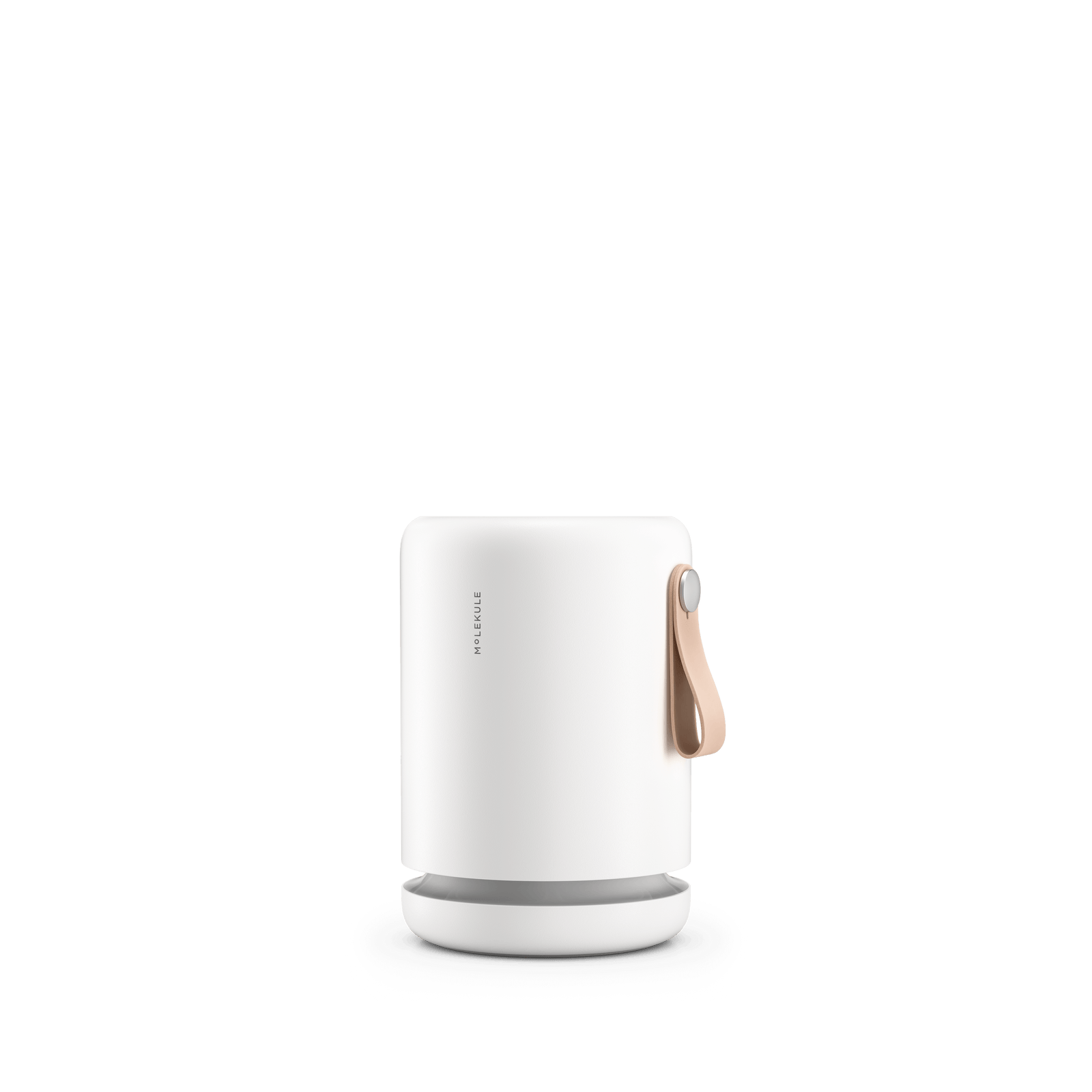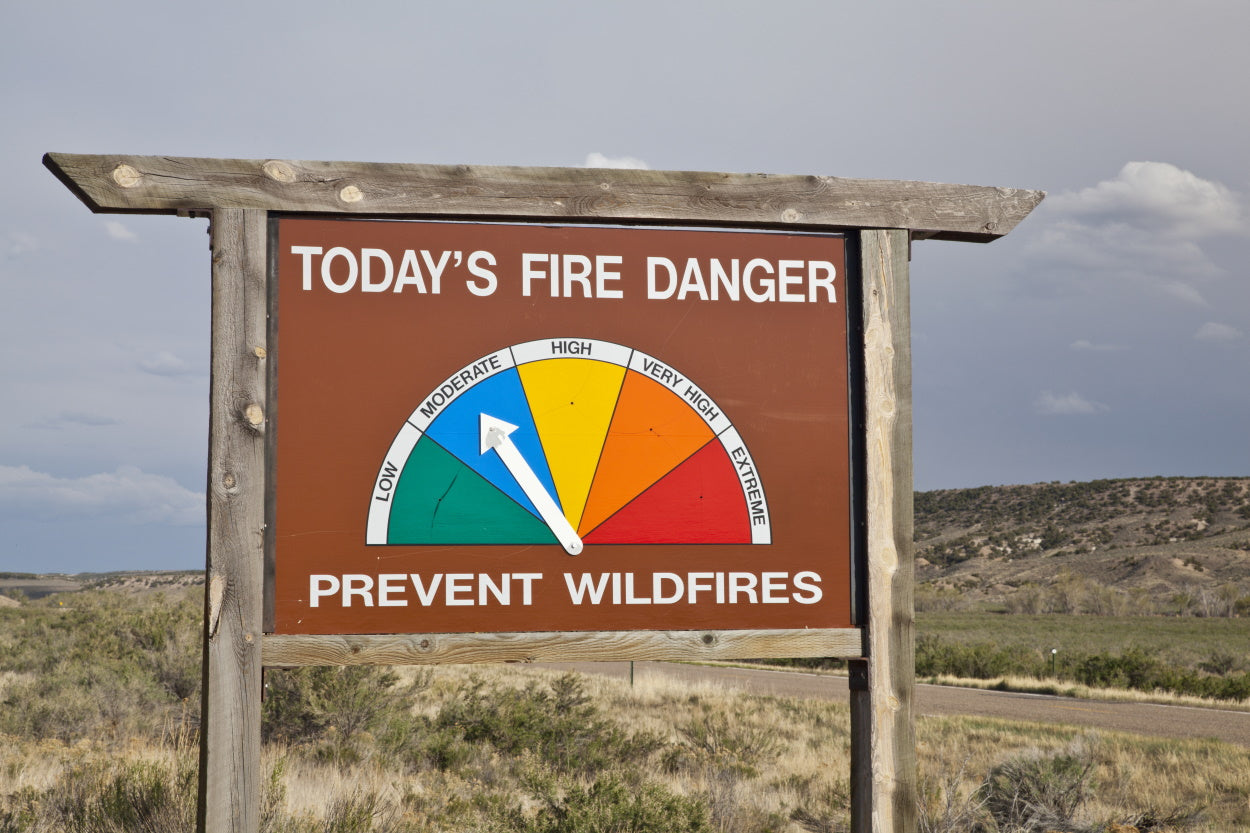Wildfires have always contributed to air pollution. However, until recently, most particle pollution in the western United States was created by emissions from vehicles and industrial sources. With the drastic increase in wildfires over the past few years, wildfire smoke has risen to be one of the most abundant — and most dangerous — sources of air pollution in the nation.
A study published in January 2021 found that smoke from wildfires causes up to half of all fine-particle pollution in the western U.S. and up to one-quarter of all fine-particle pollution across the entire country. According to researchers, this rise is largely due to the warming climate and a fuel buildup caused by decades of fire suppression and lack of controlled burns.
Read on for a breakdown of what is in wildfire smoke, how it can impact air quality and why it may be more harmful than other forms of pollution.
How does wildfire smoke affect air pollution?
Over the past 40 years, the area burned by wildfires in the United States has quadrupled. This growth in wildfire activity has led to an increase in the number of days that air quality in the U.S. is negatively impacted by smoke. Though the western U.S. typically gets the brunt of wildfire activity (and wildfire smoke), the effects of these fires span throughout the entire country.
The record-breaking wildfires of 2020 covered most of the West Coast in smoke for weeks. About 96% of Californians experienced air pollution levels far above what federal standards deem “safe.” In fact, that wildfire season caused the highest air pollution readings and most widespread unsafe levels of particle pollution since air quality started being monitored continuously in the 1990s.
The 2021 study, performed by researchers at Stanford University and UC San Diego, found that the fine-particle pollution from wildfire smoke had doubled from 2006 to 2018. In that same time period, pollution from other sources, such as vehicle exhaust, declined. In the future, the increase in wildfire pollution in the U.S. may actually counteract the air quality improvements the country has seen over the last 20 years.
What is in wildfire smoke?
The makeup of wildfire smoke depends on a few different factors, including the fuel source and the way the fire burns. Depending on which region the fire is in, the biomass that fuels it can include plant material, the tree canopy, underground roots and peat. Though the ingredients in smoke may vary from one wildfire to the next, all wildfire smoke contains the following pollutants:
- Carbon dioxide;
- Carbon monoxide;
- Particulate matter;
- Volatile organic compounds (VOCs).
Additionally, all fires burn differently, which can affect the composition of the smoke they create. A fire with large flames can lead to more complete combustion, meaning more black smoke. The extensive forest fires you typically see in California have high burn intensities, putting them in this category of “flaming” fires that produce higher levels of carbon dioxide and black carbon.
Smoldering fires, on the other hand, have less complete combustion, leading to white smoke and white organic matter left behind (picture the leftover charcoal after a night of grilling).
The specific VOCs emitted by a wildfire depend on the type of biomass burned in the fire. For example, pine trees in the temperate forests of the Sierra Nevada emit a compound called pinene when they burn. Other VOCs, such as benzene (a known carcinogen), are only emitted at especially high burning temperatures.
As fires spread past the woodlands (or brush) and into communities, additional toxic chemicals may be emitted when industrial and household goods start to burn.
The most concerning pollutant found in wildfire smoke is fine particulate matter, also known as PM2.5 because it is made up of particles 2.5 microns in size. PM2.5 are microscopic particles that are easy to inhale and small enough to penetrate the lungs and enter the bloodstream.
Since the mid-2000s, the portion of PM2.5 pollution caused by wildfires in the U.S. has grown significantly. A decade ago, wildfire smoke was responsible for less than 20% of fine-particle pollution in the western U.S. Now, it is the source of up to half of this kind of air pollution.

How does pollution from wildfire smoke impact public health?
As wildfires become more frequent and destructive, they pose an even greater threat to public health. There is evidence that any amount of smoke in the air can lead to increased morbidity and mortality among exposed populations. While a wide range of health effects have been linked to exposure to VOCs in the air, fine-particle pollutants are the most concerning part of wildfire smoke.
Airborne microscopic particles created by wildfires can cause eye, nose and throat irritation, chest tightness and difficulty breathing. They have also been linked to more severe reactions, such as asthma attacks, strokes and heart attacks. Young children, elderly adults and those with chronic respiratory conditions may be at an even greater risk of adverse health effects from PM2.5 exposure.
For decades, researchers have warned about the dangers of breathing in PM2.5 from smog. New evidence shows that particle pollution from wildfire smoke may pose an even greater threat to public health. In an ongoing Montana health study, researchers reported that people in a community exposed to wildfire smoke for 49 days in 2017 still experienced decreased lung function at least two years later.
Recent studies also support the theory that particulate matter in wildfire smoke may be more toxic than PM from other sources. A 2021 study from the University of California San Diego looked at rates of hospital visits for respiratory issues compared with PM2.5 levels in the air. Researchers found that hospital visits rose more during periods of heavy wildfire smoke pollution than periods of heavy pollution from other sources.
There are a couple of reasons why wildfire smoke may be more harmful than other sources of pollution. First, levels of PM2.5 can spike rapidly during wildfires and stay elevated higher than the pollution levels caused by smog or industrial sources. Second, it is possible that the particles in wildfire smoke cause more inflammation, oxidative stress (an imbalance of free radicals and antioxidants in cells) and respiratory infection. This may be because wildfire smoke contains more carbon-based particles than pollution from traffic or manufacturing.
The study’s authors concluded that the particle pollution in wildfire smoke may be up to 10 times more harmful to human health than particle pollution from other sources.
How can you protect yourself from wildfire smoke?
Though air pollution from wildfires has increased significantly in the U.S., especially in California, you can still take action to minimize your exposure. When wildfire smoke decreases the air quality in your community, one of the most important things you can do to protect yourself is stay inside. However, that does not guarantee that you will not be exposed to any smoke-related air pollution. Here are some additional steps you can take to protect yourself from wildfire smoke.
- Keep all your doors and windows closed while the air quality in your area is poor. If it gets warm in your home, use air conditioners or fans to help you cool off. If you cannot cool off without opening windows or doors, consider finding somewhere else to shelter while the wildfire smoke is in the air.
- Set your HVAC system to recirculate mode to decrease the polluted outside air that enters your home. If you have a single-hose portable air conditioning unit, avoid using it while it is smoky outside because it could bring outdoor air into your home.
- Use a portable air cleaner, also called an air purifier, to remove pollution that enters your home. Keep it on so that it is constantly cleaning the air around it (Molekule air purifiers not only capture VOCs and particle pollution from wildfire smoke, but they can destroy it completely.)
- Avoid any activities that can create additional indoor air pollution. This includes smoking tobacco or cannabis, frying foods, using gas or propane stoves, burning candles or incense, spraying aerosol products and vacuuming with a non-HEPA vacuum.
- Create a clean room in your home. For tips on doing this, check out our post on protecting yourself from wildfire smoke.
- Keep a supply of N95 respirators on hand and use them when you need to go outdoors.
- Avoid strenuous physical activity outdoors on bad air quality days. Exercise can increase your respiratory rate and, therefore, the amount of smoke that you inhale.
As the wildfire season gets longer and more severe, it becomes increasingly important to learn how to protect yourself from the harmful pollutants in wildfire smoke. Particle pollution from wildfires can pose a significant health risk, but following the above tips can help protect you and your family by minimizing your exposure.












